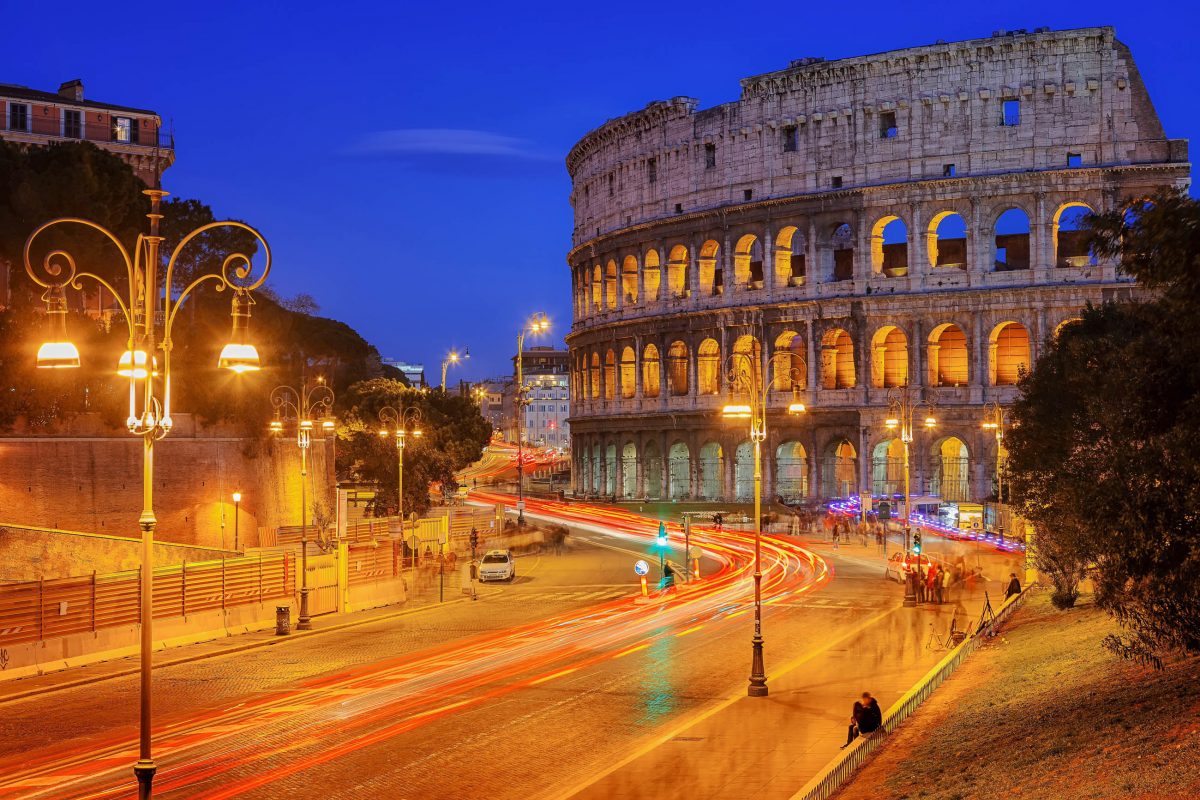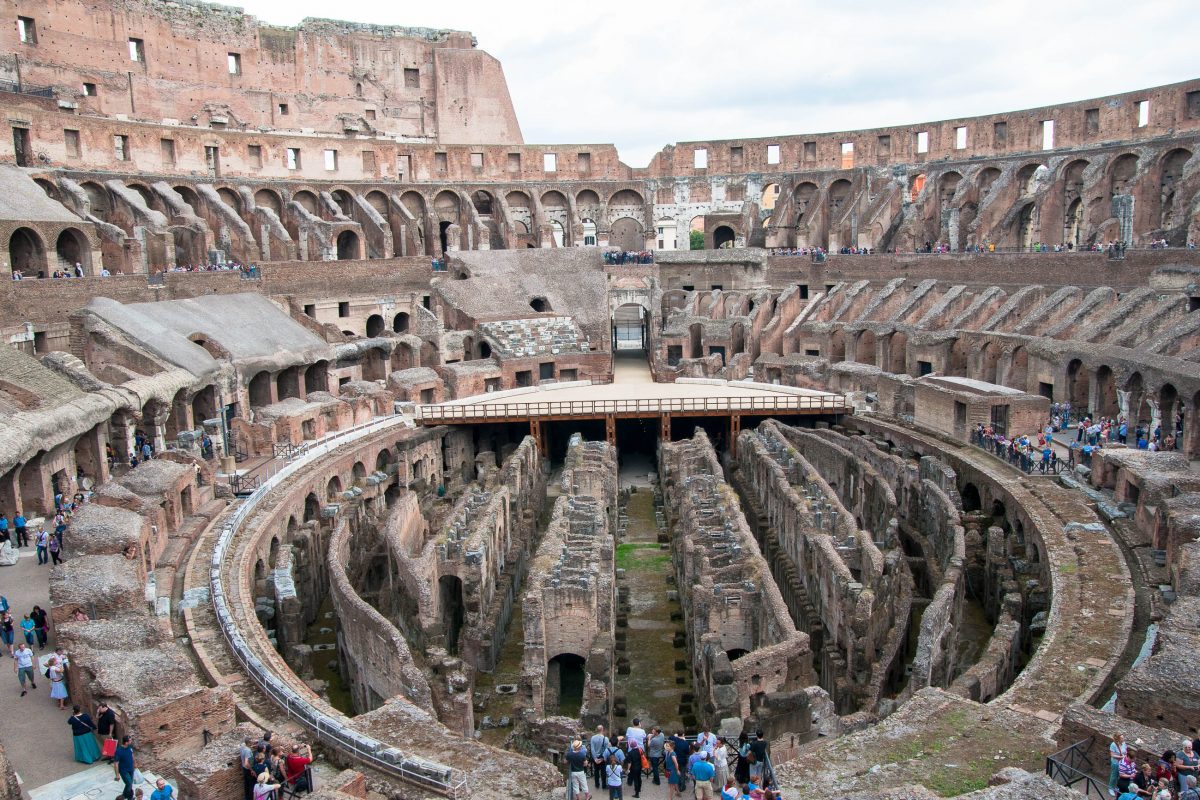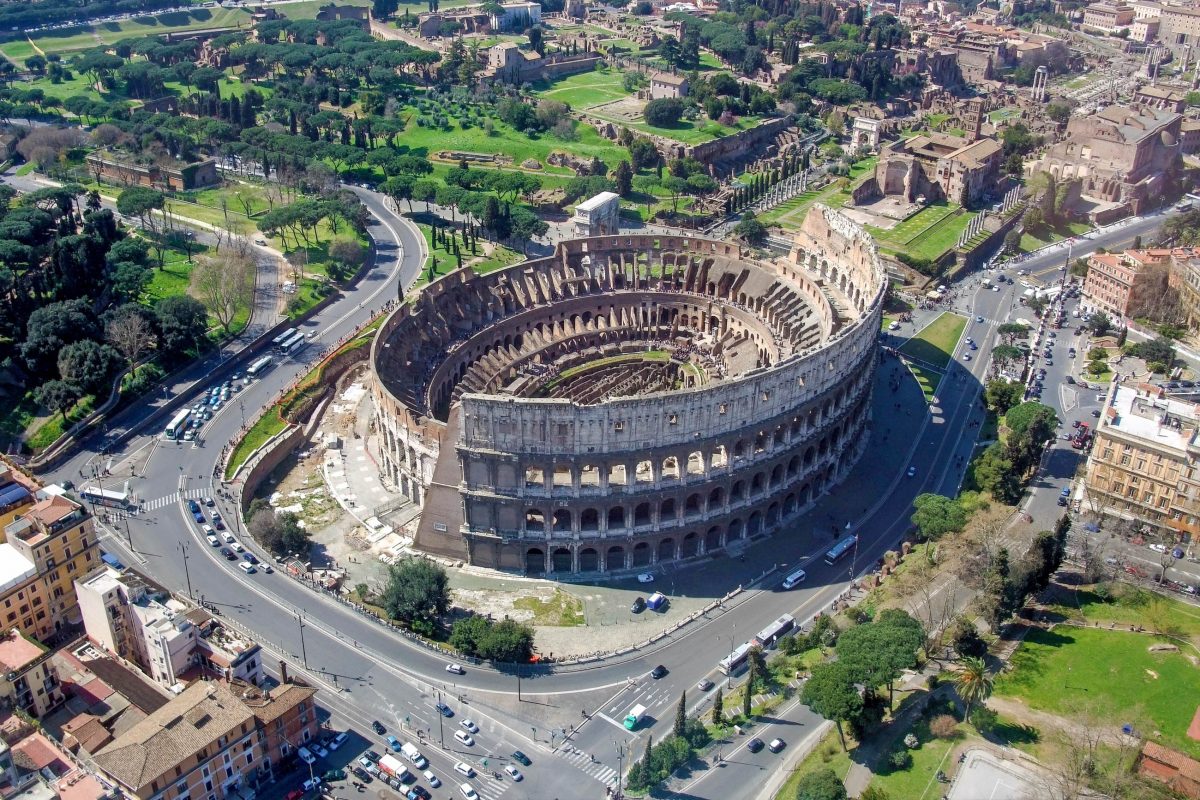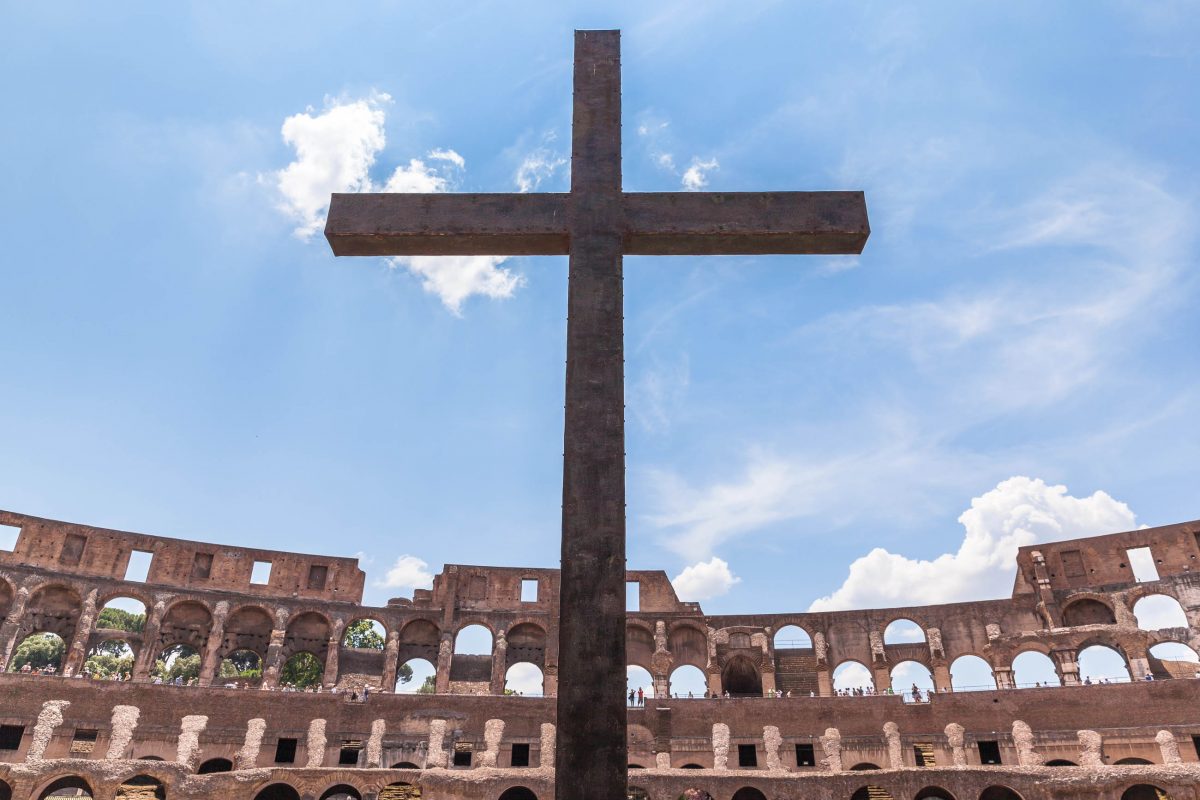Das Kolosseum in Rom ist das größte Bauwerk der römischen Antike. Besucher sehen heute noch die gewaltigen Ausmaße dieses monumentalen Bauwerks und Teile der genialen Bühnentechnik unter der Arena.
Das Kolosseum ist eines der berühmtesten antiken Bauwerke von Rom. Im alten Rom war es das Zentrum der Volksunterhaltung. Mit einer Länge von 188 Metern und einer Breite von 156 Metern ist es das größte geschlossene Bauwerk der römischen Antike und ein beispielloses Meisterwerk der Ingenieurskunst der alten Römer.
Das gigantische Amphitheater gehört zu unseren Top 10 Sehenswürdigkeiten von Rom und Italien.
Inhaltsverzeichnis
BILDER: Kolosseum in Rom
Errichtung des Kolosseums

Im Jahr 72 nach Christus gab der damalige römische Kaiser Vespasian den Auftrag das gewaltige Bauwerk über Neros Palast, der gewaltigen Domus Aurea, zu errichten. Vor einem künstlichen See stand genau dort einst die Kolossalstatue des Kaisers Nero (daher der Name). 80 nach Christus, 8 Jahre später, wurde das gigantische Amphitheater, welches 50.000 Sitz- und 23.000 Stehplätze fasste, mit einem 100 Tage dauernden Fest eingeweiht.
Die 86 mal 54 Meter messende ovale Arena war jahrhundertelang Schauplatz von Tierhetzen, Gladiatorenkämpfen, Theateraufführungen, Zirkusdarbietungen und sportlichen Wettkämpfen. Die vier Stockwerke waren prächtig verziert, der gesamte Zuschauerraum war mit kostbarem Marmor verkleidet, von dem leider heute nicht mehr viel zu sehen ist. Ein Teil des Holzbodens wurde rekonstruiert, Besucher können inmitten der Arena das Gefühl der Gladiatoren nachvollziehen, als sie vor ihrem Kaiser standen und dem Tod ins Auge blickten.
Eindrucksvolle Technik der alten Römer im Kolosseum

Die Bühnentechnik, die vor rund 2.000 Jahren diese Festspiele begleitete, war schlicht und ergreifend phänomenal. Unter dem Holzboden der Arena verbarg sich ein ausgeklügeltes System aus Käfigen, Lastzügen und anderen Maschinerien, die Artisten, Gladiatoren, wilde Tiere und Kulissen zur richtigen Zeit auftauchen und verschwinden ließen. Da der Boden der Arena im Lauf der Jahrhunderte einbrach, ist dieses Mauerlabyrinth von den ehemaligen Zuschauertribünen aus heute gut zu sehen.
Die Sitze des Kolosseums waren so genial angelegt, dass die Menschenmassen nach der Vorstellung ihre Plätze innerhalb weniger Minuten verlassen konnten. Mit Hilfe von 240 Masten an der obersten Mauer konnte der gewaltige Komplex fast vollständig mit Sonnensegel überspannt werden, um die Zuschauer vor der sengenden Sommersonne zu schützen.
Das Ende des Kolosseums

Im Jahr 404 sprang ein Mönch protestierend in die Arena, woraufhin er von der Menge zerrissen wurde. Dieser Zwischenfall veranlasste den damals amtierenden Kaiser Honorius dazu, die grausamen Vorstellungen zu verbieten, bei denen Menschen ihr Leben ließen. Tierhetzen wurden jedoch noch bis ins 6. Jahrhundert abgehalten, die letzte Vorstellung fand laut Überlieferung im Jahr 523 statt.
Im Mittelalter wurde das Kolosseum zur Burg umgebaut und schlussendlich als Lieferant für Baumaterial verwendet. Sogar einige Travertinblöcke, die für den Bau des Petersdoms verwendet wurden, waren ursprünglich im Kolosseum verbaut. Erst Mitte des 18. Jahrhunderts machte Papst Benedikt XIV. diesem Unfug ein Ende, Papst Pius VII. ließ 1805 die Ruinen des Prachtbaus sichern.
Bis heute stellt die Stadt Rom selbstverständlich fest, dass diese einzigartige Bauwerk in all seiner Pracht und Faszination erhalten bleibt.
Gedenken an die Christen

Das Bronzekreuz neben der Arena erinnert an das Christenblut, welches damals im Sand der Arena vergossen wurde. Jedes Jahr schreitet der Papst im Gedenken an die Märtyrer den im 19. Jahrhundert angelegten Kreuzweg im Kolosseum ab.
Weiterführende Links:
Offizielle Website des Kolosseums in Rom
Buchung von Online-Tickets





